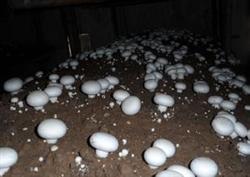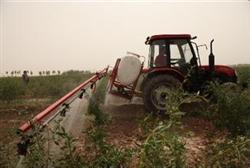Several key problems should be grasped in cultivating Pleurotus eryngii

1. To grasp the best mushroom production period of Pleurotus eryngii has been cultivated in Panjin, Liaoning Province for several years. The experience gained is that the most suitable period for the production of Pleurotus eryngii in the local mushroom shed is from the beginning of March to the end of April in spring, and from late September to early November in autumn. In the absence of heating facilities, the temperature of the mushroom shed during this period happens to be the most suitable temperature for the growth of Pleurotus eryngii fruit body. It is also the best time to bring economic benefits to Pleurotus eryngii growers. Second, when the Pleurotus eryngii strain was first planted in Pleurotus eryngii at the right time, the Beginning of Autumn began to produce the original seed, and then produced the cultivated seed, the mushroom bag was full, and the best mushroom emergence period had been missed when the mushroom was produced, which affected the yield and quality in varying degrees, increased the cost and reduced the economic benefit. After several years of research and exploration, we have found a solution: to cultivate Pleurotus eryngii in autumn, the Beginning of Autumn begins to use the separated anti-aging mother seed to directly produce the original seed and produce the mushroom bag, or use the separated anti-aging mother seed to directly produce the cultivated seed and produce the mushroom bag. For the cultivation of Pleurotus eryngii in spring, from December of the previous year to January of the same year, the separated anti-aging mother seed was used to directly produce the original seed and produce mushroom bags, or to produce cultivated species and mushroom bags, at the same time, considering the low temperature of this season, the time of producing bacteria was appropriately advanced according to the situation. In this way, the culture time can be omitted and the best mushroom emergence period can be grasped. Bring about the growth of economic benefits. 3. To improve the inoculation method of Pleurotus eryngii, at present, Pleurotus eryngii is mostly planted in plastic bags, usually inoculated at one end of plastic bags or at both ends of plastic bags, especially by hand. The disadvantage is that the growth of mycelium is inconsistent inside and outside, and the growth of mycelium on the outside needs to be delayed for several days. in order to overcome this malpractice, the inoculation method of Pleurotus eryngii is improved by hole sowing and stuffing the strain to the depth of two to three centimeters of the culture material. The mouth of the hole is filled with no space, and each bag is inoculated with four acupoints and sealed with a ventilated paste, so that the bacteria at both ends of the bag will cover the two ends of the bag very soon after germination, the whole bag is fully enclosed, and the hyphae grow inside and outside at the same time. After three experiments, the same culture bag was inoculated with hole seeding at the same time, and the bag was full one week earlier than the conventional inoculation method. This inoculation method is easy to operate and has less pollution. Pleurotus eryngii growers can experimentally change one or both ends of inoculation to hole-sowing inoculation. Points for attention, 1. The mouth of the bag must be tied tightly when loading the culture material, 2. Whether in the receiving box or in the receiving account, the same as the conventional method of disinfection and sterilization, 3. Alcohol disinfection is carried out when it is larger than the range of acupoints, and the mouth is sealed immediately after being stuffed with bacteria.
- Prev

Key points of Management of Pleurotus ostreatus shed in Autumn and Winter
Preventing the degradation of bacteria can increase the yield, reduce the occurrence and development of diseases and insect pests and reduce the amount of pesticides, which is the basis of the production of organic Pleurotus ostreatus. 1. The ambient temperature of cultured bacteria should not exceed 28 degrees, and the storage time of cultured bacteria at room temperature should not exceed half a month. two。 Have a good grasp of the culture medium.
- Next

Key techniques of Lycium barbarum in controlling diseases and insect pests
First, black fruit disease occurs in the rainy season, and the damaged fruits, flowers and buds turn black. Prevention and treatment: remove diseased flowers and diseased fruits, and spray mancozeb or bacilli. Second, aphids, mainly harmful leaves and twigs, control: spray with 1000 times of dimethoate.
Related
- Fuxing push coffee new agricultural production and marketing class: lack of small-scale processing plants
- Jujube rice field leisure farm deep ploughing Yilan for five years to create a space for organic food and play
- Nongyu Farm-A trial of organic papaya for brave women with advanced technology
- Four points for attention in the prevention and control of diseases and insect pests of edible fungi
- How to add nutrient solution to Edible Fungi
- Is there any good way to control edible fungus mites?
- Open Inoculation Technology of Edible Fungi
- Is there any clever way to use fertilizer for edible fungus in winter?
- What agents are used to kill the pathogens of edible fungi in the mushroom shed?
- Rapid drying of Edible Fungi

